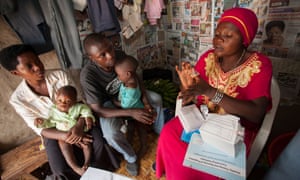2016 is likely to be remembered as an annus horribilis for so many reasons that it’s tempting to think everything is doomed.
But things are not always as they seem. There are silver linings. You just have to look hard to find them.
Death in conflict
Overall, 2016 looks set to have slightly fewer deaths through armed conflict than 2015, when 167,000 people died. Hardly numbers to celebrate.
But narrow the focus and pockets of progress can be found. According to the International Institute for Strategic Studies, the death toll from the war with Boko Haram in Nigeria has fallen sharply, as Nigerian government troops retake territory.

“The group’s operational capacity within Nigeria was weakened,” notes Anastasia Voronkova, IISS research fellow for armed conflict. “At least 4,500 civilians held captive by the group were rescued in 2015 alone; another around 5,000 people were freed by June 2016. 2016 fatalities are expected to be noticeably lower than the 11,000 recorded in 2015.”
Death tolls are also expected to be lower from internal conflicts in the Philippines, Myanmar and India, according to the IISS. Mark Rice-Oxley
Emissions
Carbon is flatlining, and our planet has breathing space. After more than a century and a half of nearly unbroken growth, the quantity of greenhouse gases we pour into the atmosphere each year has stalled for the third year running. Burning fossil fuels and chopping down forests released about 40 gigatonnes of carbon dioxide last year, roughly the same amount as in the previous two years.
What is more, this plateau in emissions is taking place against a background of quickening economic growth, showing that increasing prosperity and lifting people out of poverty need not come at the expense of the climate.

These are big reasons to be cheerful, and we need them. We are coming to the end of the hottest year ever recorded. The Arctic ice cap is 20C above its normal winter temperatures, a heating that scientists are calling “literally off the charts”, and may soon result in more rapid melting than anything yet seen. Donald Trump is hellbent on destroying the Paris agreement, boosting the coal industry and defunding Nasa’s ground-breaking climate research in favour of sending people into space. But at least our global warming emissions are abating. It has only taken 25 years to achieve.
Stalling emissions should also spell better health, because coal burning in particular pollutes the air with lung-shredding particles and choking chemicals. Finished celebrating? Good. There’s work to do. Flatlining emissions are not enough. Carbon dioxide levels in the atmosphere are still at the highest levels since humans first walked the earth. That invisible stock of carbon in the air is what causes warming, so even if we stopped burning fossil fuels tomorrow the climate would continue to change because of the greenhouse gases already there.
We are not going to stop burning fossil fuels tomorrow, and emissions need to come down by as much as 80% to have a chance of keeping warming under control. That will take decades. Every molecule of carbon dioxide we release stays in the air for up to 100 years, all the while trapping heat on the planet’s surface. Every tonne of carbon emitted puts the goal of halting climate change just a bit further out of reach. We are not out of the rapidly dwindling woods yet.
For now, we still have a chance of saving the planet from runaway warming, if we act fast to save energy and invest in clean sources. So cheer the carbon slowdown and put up more windmills. Fiona Harvey, environment correspondent
Crime
While violent crime ticked up in the UK in 2016, the overall level of offences continued its long-term decline to the lowest level since 1981. The Office for National Statistics said there were an estimated 6.5m incidents in the year to June 2016.
Various reasons are given for the long-term decline: better security against car and home theft, the drop in the jobless claimant count and a broader sociological shift towards greater civility in richer countries.

But police also report a rise in the number of reported rapes, while hate crime increased after the Brexit referendum in June and cybercrime poses an ever greater threat.
Connectivity
Connectivity is taken for granted in the western world, where smartphone and internet use rise inexorably year on year.
Now there are strong signs that this take-up is at last being mirrored in poorer parts of the world, with positive outcomes for growth, health and democratic participation.
Africa in particular is experiencing the sharpest growth anywhere of smartphone proliferation: by 2020 there will be more than 700m smartphone connections in Africa – more than twice the projected number in North America, according to GSMA, an association of phone operators. In Nigeria alone in 2016, an estimated 16 smartphones are sold every minute.
The mobile industry will account for 8% of GDP by 2020 – double what it will be in the rest of the world. And internet penetration is rising faster than anywhere else as costs of data and devices fall.
Population
Could 2016 go down as the year that the great global population surge finally showed signs of slowing?
The number of people around the world increases by about 80 million every year, and forecasts predict that the global population will continue to mount through this century, to hit about 11 billion people by 2100.
But much depends on behaviour and attitudes in parts of the world that have yet to experience the sudden drop in birthrates that swept across rich countries in the three decades after the second world war.
In January, the latest figures published by the UN showed more women than ever are now using some form of contraception. Some 64% of women aged between 15 and 49 who are married or living with a partner are now using traditional or modern forms of family planning, up from 36% in 1970.
Poorer regions of the world – particularly Asia and Africa, where access to contraception has been a barrier to development – have witnessed the fastest pace of growth. The UN predicts that Africa, a continent with the largest demand for contraceptives but the worst access to services, will record the highest rates of growth over the next 15 years.
In November, the Family Planning 2020 initiative reported that the number of women using contraceptives in its 69 target countries had leapt by 30 million in the past four years alone.

This is not only good news for women and their families: the increase in family planning could cut projections of population growth by as much as 1 billion over the coming years. Jagdish Upadhyay, of the UN population fund, said if by 2030 the average family size was down by the equivalent of one child, then by 2030 the world population would be approximately 8 billion rather than 9 billion. Liz Ford
Homicide
Murder rates have been in decline in western democracies for years, but had persisted at stubbornly high levels in parts of central America. However, 2016 could go down as a good year in El Salvador, for years one of the most murderous places in the world.
The July-September period produced a year-on-year drop in homicides of almost 50%, according to data gathered for the Guardian by the IISS.
“This decline can be attributed to the government’s tightened security policies at prisons, the creation of a new paramilitary force comprising 600 members of the military and 400 police officers, as well as a negotiated truce between the leaders of the three main gangs,” said Anastasia Voronkova at the IISS.

“The timing of the announcement by the gangs seemed to match the downward homicide trend: homicides fell by 42% in April 2016 in comparison with March [from 611 to 353], and have remained stable since then.”
Disease
The standout news in 2016 was that Sri Lanka had become the latest country to be declared malaria free. More than 30 countries that are collectively home to some 2 billion people are hopeful that they might follow suit in the next four years.
The task of reducing the toll of malaria in sub-Saharan Africa, which has 90% of cases and 92% of deaths, is hard and needs more resources. But 2016 brought good news from other quarters: the World Health Organisation declared that measles had been eradicated from the Americas; death rates fell in the developed world from some forms of cancer, and the number of people getting Aids treatments continued to rise, from negligible levels in 2000 towards a target of 30m by 2020.
The global assault on infectious diseases has led to ever longer lifespans: life expectancy is on average 10 years longer in 2016 than it was in 1980.
Poverty
The number of people living in extreme poverty has yet to be estimated for 2016, but the long-term trend is a happy one, describing steep decline.
Numbers have more than halved since 1993, despite a growth in the world population of almost 1.9 billion.
Statistically, as economies grow and middle classes expand, almost 50 million people escape poverty every year in net terms — a population equivalent to Colombia or Korea. Put even more simply, every single day over the past 25 years, the number of people living in extreme poverty has declined by 137,000.
According to the newest figures, the east Asia and Pacific region accounted for the greatest reduction in extreme poverty over the 23-year measuring period, based on a $ 1.90-per-day poverty line.
In just one year alone – 2012 to 2013 – the number of poor in east Asia and the Pacific declined by 71 million, while in south Asia the number of poor dropped by 37 million.
Declining poverty in extreme terms has shown significant regional fluctuations, however. In 2013, Sub-Saharan Africa accounted for nearly 51% of the global poor (389m people), but in 1990, it was east Asia and the Pacific that accounted for half of the global poor.
While the UN aims to eradicate extreme poverty by 2030, the World Bank report warns that economic growth has to be more equally distributed – in other words, the rich can’t keep getting richer – and says that extreme poverty trends depend on the economic success of Sub-Saharan Africa.
Eight charts that show 2016 wasn"t as bad as you think
Hiç yorum yok:
Yorum Gönder